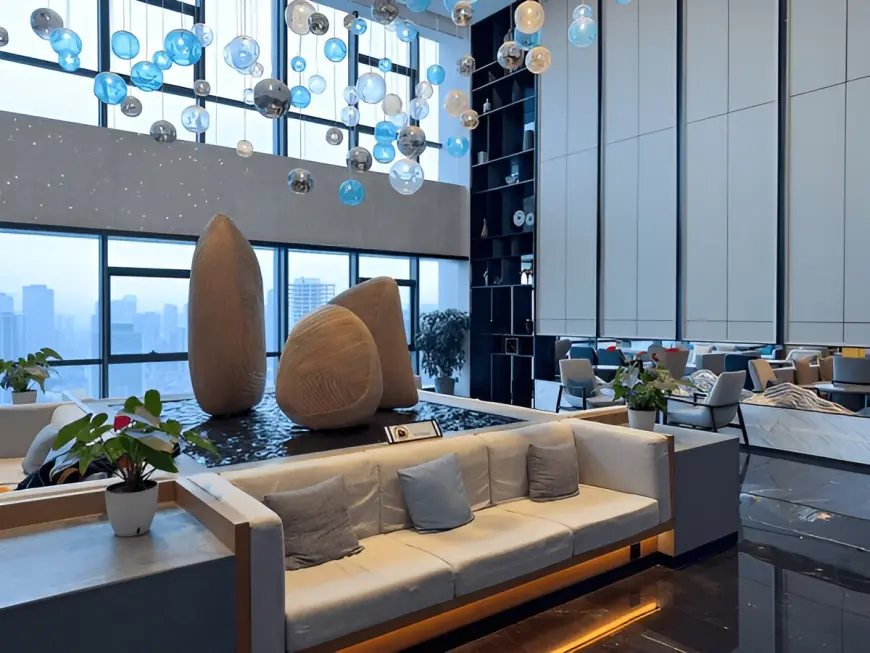What Are the Overlooked Mistakes in Commercial Lighting Projects?
Avoid costly errors in your lighting plans. See what commercial spaces often miss and how commercial lighting designers in Reno deliver smarter, code-ready results.

Lighting does more than help people see clearly—it shapes how we feel, behave, and move within a space. In stores, poor lighting can make products look dull and unappealing. In offices, harsh or poorly planned lighting can lead to headaches or fatigue, lowering productivity.
Unfortunately, many people overlook these effects when starting a project. They might choose lighting based on appearance or cost alone, without considering how it will impact those who use the space daily.
That's where commercial lighting designers in Reno come in. These experts understand how to create lighting plans that are both visually appealing and comfortable. By working with professionals, you ensure that lighting doesn't just function—it enhances the space and improves the experience for everyone in it.
Avoid Overlooking Lifecycle Costs with Commercial Lighting Designers in Reno
Many people think only about how much lights cost at first. However, cheaper lights may cost more in the long run. They may use more electricity, break sooner, or need fixing often.
Good lighting should save energy and last longer. Wise choices like LED lights, motion sensors, or dimmers can reduce energy bills. But sadly, these simple upgrades are often ignored.
Here's what helps:
-
Pick lights labeled ENERGY STAR®
-
Add sensors to turn lights off when no one's around
-
Plan for lower energy use in quiet areas
Making smart choices now avoids trouble later and saves money every month.
Choosing Aesthetics Over Functionality
It's easy to pick lighting that looks stylish. But sometimes, those fancy lights don't light things up nicely. A cool-looking fixture might not give off enough light in the right places.
This mistake often appears in places like restaurants, showrooms, or offices. People may focus too much on looks and forget about performance. Lights should always match the purpose of the space. Commercial lighting designers in Reno know this well. They help choose lights that do both—look great and work well. After all, good lighting isn't just beautiful—it's also helpful and safe.
Misunderstanding Zoning and Control Systems
In many buildings, different areas need different lighting. For example, a store may want brighter front lights but softer ones near fitting rooms. This is where lighting zones are functional.
But many projects skip zoning or do it wrong. Lights may stay on too long, or some spots get too bright. This wastes energy and makes the space uncomfortable.
With better planning, businesses can:
-
Use light where it's needed most
-
Save power in unused spaces
-
Create a better look and feel
Zoning also works best with the proper controls, like timers or dimmers that are easy to use.
Not Hiring Professional Designers Early Enough
Lighting decisions shouldn't wait until the last minute. But that's exactly what happens in many commercial projects. When experts are called in, it's too late to make big changes without spending more.
That's why involving commercial lighting designers in Reno early is so important. They can work with the architect, electrician, and builder from the start. This helps avoid wiring problems, fixture mistakes, or layout issues.
When lighting is included in early planning, everything runs smoother, and the result looks and works better.
Skipping Daylight Integration
Sunlight is one of the best and cheapest ways to brighten a space. But many commercial buildings ignore this—some block out daylight with dark window coverings or place desks far from windows.
Others forget to manage glare or reflections from the sun, which can hurt people's eyes. But with smart planning, sunlight can be used safely and well.
Helpful ideas include:
-
Light window blinds that let in soft light
-
Windows are placed to avoid screen glare
-
Combining daylight with dimmable electric lights
Daylight adds warmth to a space and lowers energy use—when it's used the right way.
Failing to Plan for Maintenance Access
Every light will need cleaning or changing someday. But many designs make this hard. For example, high ceilings or odd fixture placements can make it risky or expensive to reach lights.
When this is overlooked, problems appear later. It might also take special lifts or long ladders to change a bulb.
So it's better to plan:
-
Think about how workers will reach each light
-
Use long-lasting fixtures in hard-to-reach places
-
Avoid placing lights where ladders won't fit
If a light can't be maintained easily, it becomes a problem, not a solution.
Using the Wrong Color Temperature
Different colors of light are good for different places. Bright white light (like daylight) also helps people stay alert. Warm yellow light feels cozy and relaxed.
Still, many projects use the same light color everywhere. That can make a hospital feel like a warehouse or a coffee shop feel too cold.
Here's how to choose:
-
Warm light (2700K–3000K) for restaurants and waiting areas
-
Cool light (4000K–6500K) for factories or workstations
-
Neutral light for general use in shops or schools
Using the right color temperature helps people feel more comfortable and focused.
Disregarding Regulatory Codes and Local Standards
Every city has lighting rules. These may cover how much energy lights can use, emergency lighting, and even safety during a power outage.
But these rules are sometimes skipped or misunderstood. This also leads to failed inspections, delays, and costly changes.
Some common mistakes include:
|
Mistake |
Result |
|---|---|
|
No emergency lighting |
Code violation and safety risk |
|
Too many high-power fixtures |
Higher energy bills |
|
Non-certified lights |
Failed inspections |
Therefore, expert planning matters. Professionals also ensure the design follows all laws from the start.
The Real Cost of Cutting Corners in Lighting Design
When lighting goes wrong, it doesn't just look bad—it makes the space harder to use, more expensive to run, and less safe. But the good news is, most mistakes are easy to avoid with the right help.
Bringing commercial lighting designers in Reno early helps prevent small problems from becoming big ones. These experts know what to plan, what to avoid, and how to design systems that last.
At Calibration Consultant, LLC, the team focuses on smart, safe, and code-ready lighting plans. They help businesses create bright, efficient, and ready spaces for the future, without the usual mistakes.
What's Your Reaction?
 Like
0
Like
0
 Dislike
0
Dislike
0
 Love
0
Love
0
 Funny
0
Funny
0
 Angry
0
Angry
0
 Sad
0
Sad
0
 Wow
0
Wow
0



















































